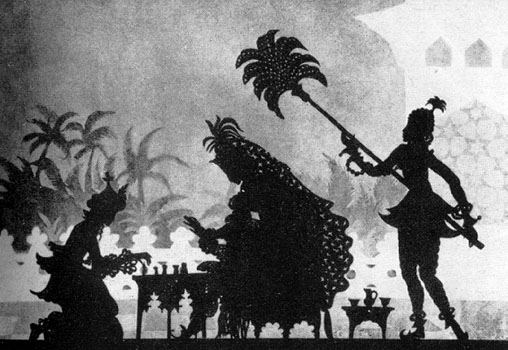
The autumn leaves are
littering the ground here, their beautiful colours offset by the berries in the
hedges. The wind has picked up tonight, so much of this rich harvest of leaves
will have been buffeted and blown away by the time I set out tomorrow morning.
This season always brings to mind a number of different autumnal songs, generally wistful music about the passing of life, loves and time in general. As much as I like summer, the passage to autumn doesn't bother me so I don't really share the regret-tinged tones of these songs. The following certainly isn't an elegy to any particular feuille morte from the windier moments of my life...

Nevertheless I do like the songs... This probably started with a song by Justin Hayward in the 70's, called Forever Autumn, but this isn't the most famous music with autumn as its theme. For that, you have a more Gallic source...
After Claude François' Comme d'Habitude of 1967 (taken up by Frank Sinatra to
become, more famously, My Way in 1969) one of the most famous French songs to
gain international recognition, recorded by numerous artists in many different
genres is Les Feuilles Mortes.
Les Feuilles Mortes was sung by the Italian-born actor and singer Yves
Montand. Himself married to the iconic French actress Simone Signoret, Montand
was briefly romantically linked to Marilyn Monroe in the early 60's when
filming in Hollywood. Monroe was still married to Arthur Miller at that time,
and I don't know how much Montand/Monroe regretted this liaison, or its ending
or indeed if Montand thought of this whilst singing the song itself. He sings of his sentimental memories of a lost love, a time when living was more beautiful and Life had not yet separated the two lovers. The souvenirs and regrets of that radiant period are scattered like fallen leaves, treasured yet lost to the dull winds of time, washed away like footsteps in the sand.
Oh je voudrais
tant que tu te souviennes
Des jours heureux où nous étions amis
En ce temps là, la vie était plus belle
Et le soleil plus brûlant qu'aujourd'hui
Les feuilles mortes se ramassent à la pelle
Des jours heureux où nous étions amis
En ce temps là, la vie était plus belle
Et le soleil plus brûlant qu'aujourd'hui
Les feuilles mortes se ramassent à la pelle
Tu vois je n'ai pas oublié
Les feuilles mortes se ramassent à la pelle
Les souvenirs et les regrets aussi
Et le vent du nord les emporte
Dans la nuit froide de l'oubli
Tu vois, je n'ai pas oublié
La chanson que tu me chantais
C'est une chanson, qui nous ressemble
Toi tu m'aimais, et je t'aimais
Et nous vivions tout les deux ensemble
Toi qui m'aimais, moi qui t'aimais
Mais la vie sépare ceux qui s'aiment
Tout doucement sans faire de bruit
Et la mer efface sur le sable
Le pas des amants désunis
C'est une chanson, qui nous ressemble
Toi tu m'aimais et je t'aimais
Et nous vivions, tous deux ensemble
Toi qui m'aimait, moi qui t'aimais
Mais la vie sépare ceux qui s'aime
Tout doucement sans faire de bruit
Et la mer efface sur le sable
Le pas des amants désunis.
The song finds its
origins in music by the Hungarian composer, Josef Kosma, for a ballet in 1945.
The poem by Jacques Prévert was later arranged around the music score in 1946, and was the final version was sung
in the film Les Portes de la Nuit. This
gloomy drama, set in post-war Paris and directed by Marcel Carné (1909-1996),
was not a great success, but its poetic urban realism later influenced the
American film noir genre.
The song shook off the
bleaker tone of its origin title, Les Feuilles
Mortes (dead leaves), and became a little mellower when renamed Autumn Leaves. The various jazz interpretations
of Autumn Leaves later gave the song an upbeat tone with
singers such as Miles Davis and Nat King Cole.
However, there have been other stylistic approaches to Autumn Leaves, with singers varying from Tom Jones, Frank Sinatra, Eva Cassidy and Iggy Pop, just to cite a few...
Les Feuilles Mortes found another tone and mood again, when it was referred
to in the song La Chanson de Prévert by
another iconic French singer, Serge Gainsbourg. Written in 1961, the song dates
back to a period when Gainsbourg was still producing highly-successful work for
other artists, but had yet to interpret his own songs on stage. Here the lyrics
of the original poem Les Feuilles Mortes are
drawn on, but in a more melancholic manner still!
"Past loves never stop dying... Let
autumn pass, winter come and the song of Prévert, that song, Les Feuilles Mortes, fade from my memory
and then that day my past loves will have finished dying away..."
 |
| These leaves will be evergreen... |
Oh je voudrais tant que tu te souviennes
Cette chanson était la tienne
C'était ta préférée
Je crois
Qu'elle est de Prévert et Kosma
Et chaque fois les feuilles mortes
Te rappellent à mon souvenir
Jour après jour
Les amours mortes
N'en finissent pas de mourir
Avec d'autres bien sûr je m'abandonne
Mais leur chanson est monotone
Et peu à peu je m' indiffère
A cela il n'est rien
A faire
Car chaque fois les feuilles mortes
Te rappellent à mon souvenir
Jour après jour
Les amours mortes
N'en finissent pas de mourir
Peut-on jamais savoir par où commence
Et quand finit l'indifférence
Passe l'automne vienne
L'hiver
Et que la chanson de Prévert
Cette chanson
Les Feuilles Mortes
S'efface de mon souvenir
Et ce jour là
Mes amours mortes
En auront fini de mourir
Well, after that, here's Eric Clapton's version of Autumn Leaves to end on a more glowing autumnal note...















